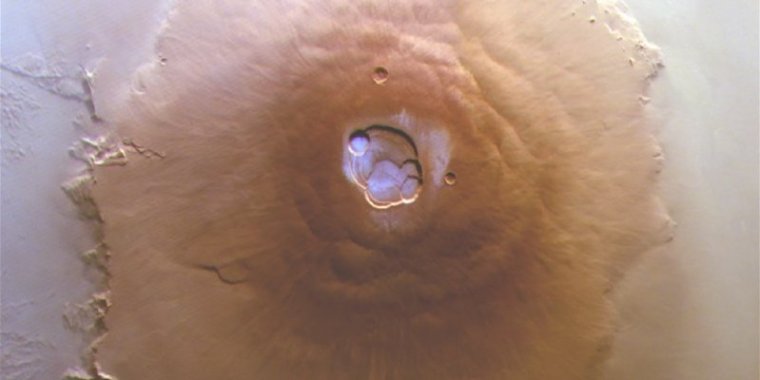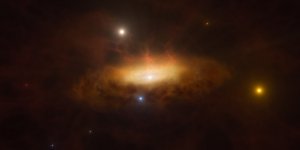| News / Space News |
Frost Discovered on Mars’ Equator for First Time
Water frost has been detected at the equator of Mars, a region where it was previously believed to be impossible.

Water frost has been detected at the equator of Mars. Photo: tasnimnews.com
The frost was observed by two European Space Agency (ESA) spacecraft: the ExoMars Trace Gas Orbiter (TGO), which arrived at Mars in 2016, and the Mars Express mission, in orbit since 2003. The frost is located in the Tharsis region, Mars’ largest volcanic area, which includes Olympus Mons, the tallest volcano in the solar system.
Adomas Valantinas, who made the discovery as a PhD student at the University of Bern, said, "We thought it was impossible for frost to form around Mars' equator, as the mix of sunshine and thin atmosphere keeps temperatures relatively high at both surface and mountaintop – unlike what we see on Earth, where you might expect to see frosty peaks."
Now a postdoctoral researcher at Brown University, Valantinas added, "Its existence here is exciting and hints that there are exceptional processes at play that are allowing frost to form."
The frost appears for only a few hours around sunrise and is extremely thin, about the thickness of a human hair. Despite this, it covers a large area of the volcanoes, with its water content estimated to fill approximately 60 Olympic swimming pools.
The Tharsis region’s volcanoes, including Olympus Mons, Arsia Mons, Ascraeus Mons, and Ceraunius Tholus, have deep hollows at their summits called "calderas."
The team believes that unique air circulation above the Tharsis region creates microclimates within these calderas, allowing frost to form. Nicolas Thomas, Principal Investigator of TGO's Colour and Stereo Surface Imaging System (CaSSIS), stated, "Winds travel up the slopes of the mountains, bringing relatively moist air from near the surface up to higher altitudes, where it condenses and settles as frost."
Valantinas explained that detecting this frost was challenging due to the need for specific orbital conditions to observe the early morning frost.
"We need an orbit that lets us observe a location in the early morning," he said, noting that many other spacecraft are synchronized to observe in the afternoon.
The discovery was somewhat serendipitous, as the team was initially looking for frost near the equator for different research.
Colin Wilson, ESA project scientist for both ExoMars TGO and Mars Express, highlighted the significance of finding water on Mars, both scientifically and for exploration.
"Even so, this discovery is particularly fascinating," Wilson said. He noted that Mars’ low atmospheric pressure creates unusual conditions, where mountaintops are not usually colder than the plains. Despite this, moist air can still condense into frost on mountain slopes, a phenomenon Thomas described as "decidedly Earth-like." (Tasnim News Agency)
YOU MAY ALSO LIKE





